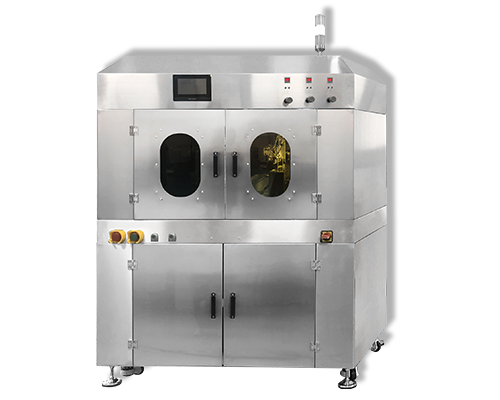Microneedle Type
Microneedle Type – Medical Coating Technology – Cheersonic
Microneedles (MNs) refer to micro-scale needles used for transdermal drug delivery, tissue fluid sampling, signal detection, biosensing, and other targets. They are painless, minimally invasive, and easy to operate.
Faced with many types of microneedles, everyone may be “dazzled”. In this issue, MNs will be classified according to the characteristics of microneedles, and various types of MNs and their preparation methods will be introduced.
Solid Microneedle
Solid microneedles (SMNs) are fabricated on a flat surface and can range from 5´5 to 20´20 in arrays, similar to a spiked plate.
Methods: SMNs can be directly cut from solid materials by laser cutting and mechanical/chemical etching, or they can be cast and electroplated from a master mold. Mode of administration: SMNs are inserted into the skin to form micropores on the skin surface. After removal of SMNs, a drug patch is used, and the drug formulation diffuses slowly into the deep tissue through the remaining pores. SMNs can also be used to scratch the skin, creating streaks of damage on the surface of the skin, and the drug can then diffuse into the skin.
Advantages: Due to their relatively high stiffness, SMNs have sufficient stiffness to easily penetrate the skin.
Disadvantages: High hardness leads to brittleness, and SMNs are prone to fracture during transportation and use.
Hollow Microneedle
Hollow microneedles (HMNs) are created when conventional hypodermic needles are reduced to micron size in length and diameter. It can be a single needle or multiple needles attached to a plate/base which can be attached to a device that provides an external drive to inject fluids or drugs through an internal hole or cavity.
Method: thermoplastic extrusion stretching process, etc. Mode of administration: Similar to subcutaneous injection, the liquid drug can be flowed into the skin through the HMNs nanotubes under pressure.
Advantages: Allows easy dosage control according to patient needs.
Disadvantages: Dosing rate and volume may be limited due to tight skin.
Coated Microneedles
Coated microneedles (CMNs) prepared from various biodegradable and biocompatible materials can rapidly deliver high molecular weight molecular drugs into the skin. Storing the drug in the solid phase as a coating for the microneedles can enhance their long-term stability.
Method: Dip coating, roller coating, layer-by-layer coating and spray coating and other coating methods. Mode of administration: After inserting CMNs coated with water-soluble drugs into the skin, the drugs are dissolved from the CMNs coating into the skin, and then the microneedles are pulled up.
Advantages: Cost-effective, simple to operate, and able to deliver drugs in large doses.
Disadvantages: The coating is easy to fall off during the insertion process, and the dissolution kinetics of the coating in the skin will affect the release of the drug, but it is not easy to control.
Hydrogel Microneedles
Hydrogel-forming microneedles (HFMNs) are prepared from a hydrogel-forming polymeric matrix. The microneedle array quickly absorbed fluid when inserted into the skin, causing the hydrogel to swell. This creates a continuous, unobstructed hydrogel conduit that allows the drug to penetrate into the skin.
Methods: Constructed by mold method and projection light curing (DLP) method. Mode of Administration: HFMNs rapidly absorb fluid when inserted into the skin, causing the hydrogel to swell, resulting in a continuous, unobstructed hydrogel conduit that allows the drug to penetrate into the skin.
Advantages: a. It has a large drug load and controllable drug release effect; b. The needle body material is composed of polymer biomaterials, which has good biocompatibility and avoids the potential damage to the skin caused by the breakage of the needle tip; c. The microneedles prepared from molecular biomaterials can achieve subcutaneous swelling of the microneedles without dissolving, thereby effectively controlling the release rate of the loaded drug.
Disadvantages: Due to the flexibility of the polymer, the hardness of the hydrogel microneedles has yet to be resolved.
Dissolving Microneedles
Dissolving microneedles (DMNs) are made of some biocompatible water-soluble matrix materials, and there is no need to consider whether they will break on the skin and biocompatibility issues. When the microneedle is inserted into the skin, the needle tip is dissolved by the tissue fluid, and the encapsulated drug is naturally released, so as to achieve the purpose of drug administration.
Methods: two-step casting method, droplet air blowing method, centrifugal lithography, photopolymerization, wire drawing lithography, etc. Mode of administration: Biodegradable polymers and water-soluble carbohydrate drugs are usually encapsulated in microneedle matrices. After DMNs are inserted into the skin, they will be completely degraded or dissolved in the skin to achieve drug release.
Advantages: good biocompatibility, simple and convenient way of administration, just dissolve in the skin, omitting two-step administration steps.
Disadvantages: low drug load, poor mechanical strength and skin piercing ability, and drug activity cannot be well maintained.
Ultrasonic nozzles are particularly suitable for a wide range of medical coating applications due to their very precise, non-blocking, repeatable spray performance and extremely low flow rate capability. For several years, Cheersonic has been providing ultrasonic medical coating system to medical device manufacturers worldwide. As medical device technology evolves, we will continue to design unique medical coating ultrasonic spray solutions to enhance patient safety and provide the highest quality medical device coating on the market.


